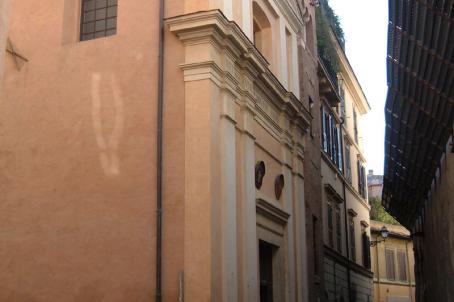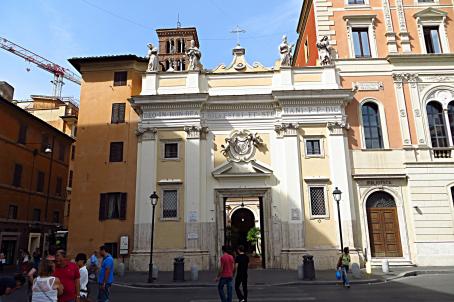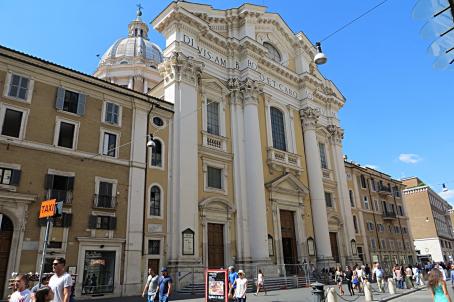Church of San Lorenzo in Lucina
San Lorenzo in Lucina was first consecrated in the 5th century. The church as we see it today dates mainly from the 17th century when the interior was completely transformed by Cosimo Fanzago. Another restoration was carried out in the second half of the 19th century, during which, by order of Pius IX, the Baroque decorations of the nave were removed and replaced by the frescoes by Roberto Bompiani that can still be seen today.






